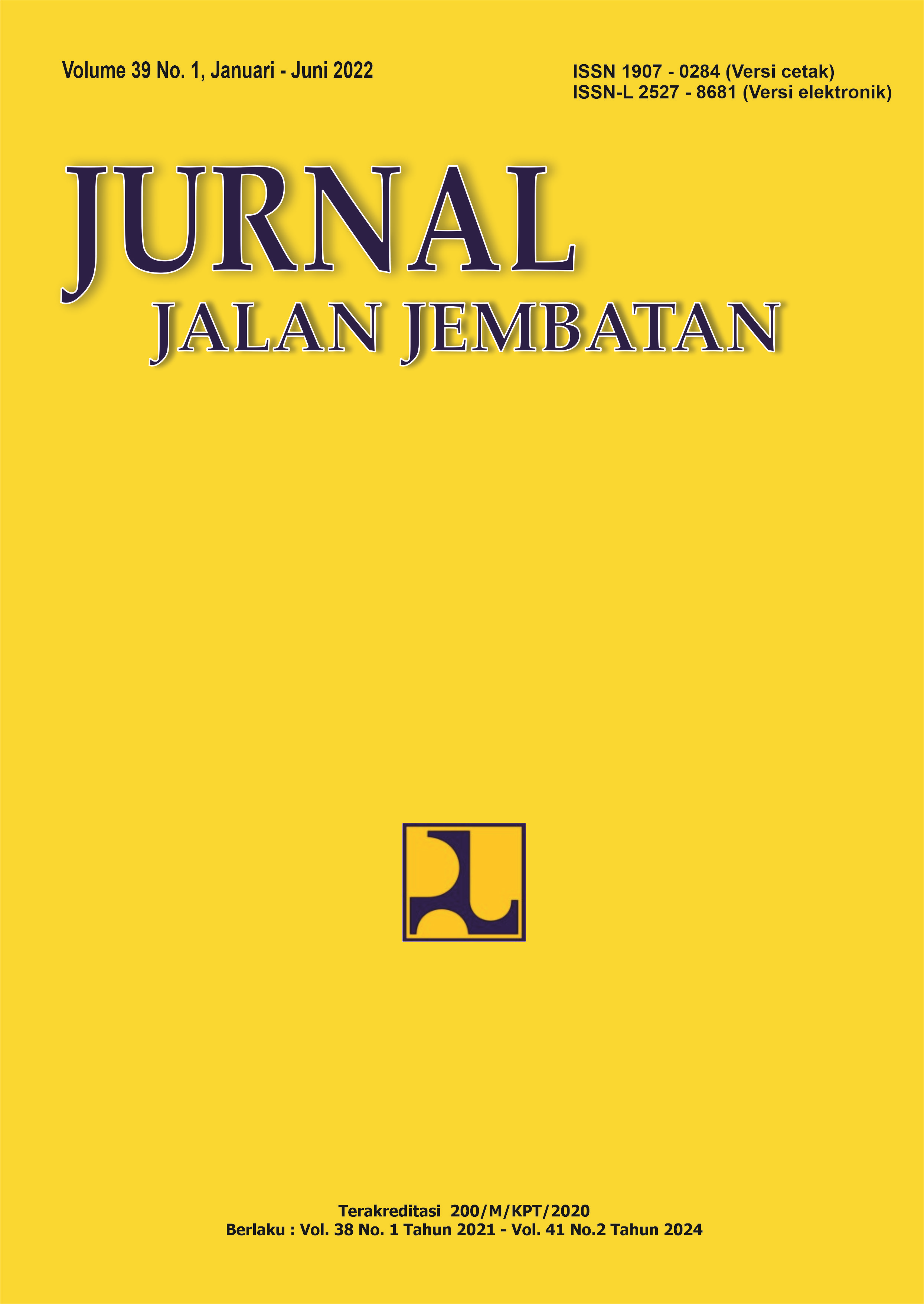ALTERNATIVE PLANNING OF CONCRETE MIXTURE COMPOSITION WITH A COMBINATION OF CHEMICAL ADDITIVES TYPES F AND D TO ACCELERATE FORMWORK OPENING TIME
Main Article Content
Abstract
The demand for an acceleration of project completion time is often an obstacle, especially in structural work which is a critical path. The length of time for concrete curing and formwork dismantling sometimes obstructs the progress of the project. The time required for casting, concrete curing and unloading of formwork in a long span bridge construction project is ± 14 days with a record that there are no obstacles in the field. Based on these problems, researchers are trying to provide an alternative solution through a compressive strength test with a variant of the concrete quality and the curing time using chemical additives type F and type D. The study aims to find the minimum concrete compressive strength, the curing time, and the effects of adding a chemical additive that refers to General Specifications Standard 2018 (70% of the designed concrete compressive strength). The variant of the concrete quality is 40 MPa, 50 Mpa, and 60 Mpa while the variant of the curing time is 1,2,3,7, and 28 days. Based on the study, the minimum concrete compressive strength for each concrete quality is 28,58 MPa, 36,85 MPa, and 46,25 MPa. The curing time needed for fc’ 40 MPa and fc’ 50 Mpa is 2 days while for fc’ 60 MPa is 3 days. The use of chemical additives also has an impact on increasing compressive strength. The maximum compressive strength value of 28 days is found in the variation of f'c 60 Mpa of 62.20 Mpa with additive content of type F dan D of 0.6% and 0,15% of the cement weight. Optimum compressive strength is achieved when the curing process is done using the soaking method.
Key words: critical path, formwork, chemical additives, compressive strength, soaking method.
Article Details
Authors who publish in this journal agree to the following terms:
-
Authors retain copyright and grant the journal the right of first publication with the work simultaneously licensed under a Creative Commons Attribution License, which allows others to share the work with acknowledgment of the work's authorship and initial publication in this journal.
-
Authors may enter into additional contractual arrangements for the non-exclusive distribution of the journal's published version of the work (e.g., post it to an institutional repository or publish it in a book), with acknowledgment of its initial publication in this journal.
-
Authors are permitted and encouraged to post their work online (e.g., in institutional repositories or on their website) as it can lead to productive exchanges, as well as earlier and greater citation of the published work.
Each submitted manuscript must be accompanied by a "Manuscript Originality Statement" and a "Copyright Transfer Statement".

